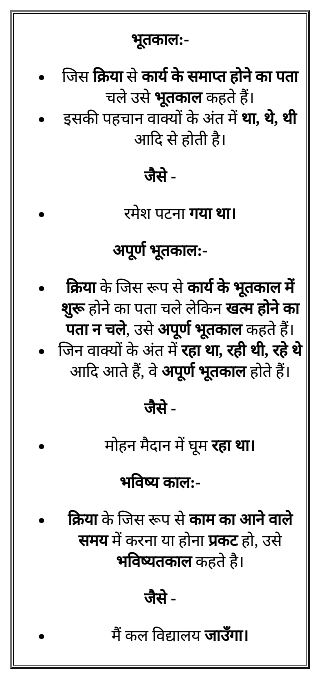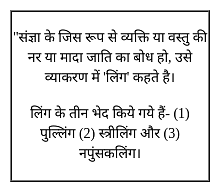BPSC TGT SST (History & Polity) Mock Test - 2 - Bihar PGT/TGT/PRT MCQ
30 Questions MCQ Test Bihar TGT Exam Mock Test Series 2024 - BPSC TGT SST (History & Polity) Mock Test - 2
Which of the following adverbs talks about time?
ढीठ पर्यायवाची शब्द का अर्थ क्या होगा?
| 1 Crore+ students have signed up on EduRev. Have you? Download the App |
निम्न में से कौन सा वाक्य वर्तमान काल का है?
In this questions, a number series is given with one term missing. Choose the correct alternative that will continue the same pattern and fill in the black spaces.
Q. 3, 12, 27, 48, 75, 108, (____)
Directions to Solve
In each of the following questions find out the alternative which will replace the question mark.
Question -
Flow : River :: Stagnant : ?
In a match, A scored 6.25% fewer runs than B. The runs scored by B were what percentage more than that by A?
The HCF and LCM of two numbers are 12 and 924 respectively. Then the number of such pairs is
It is known to all that the people of Indus Valley carried on trade with the famous contemporary centres of culture. How do we know that they carried on trade with Mesopotamia?
Consider the following statements regarding Jain sects.
1. The Svetambara tradition of Jainism traces its lineage through Sthulabhadra.
2. As per the Digambara sect of Jainism, Bhadrabahu was the last Shruta Kevalin.
Which of the above is/are correct?
Which statement/s is/are correct?
I. The ceremonies connected with the worship of Muslim saints are more Indian than Islamic in details.
II. Casteism began appearing in Muslim society.
III. Some aristocratic Muslim families adopted the Hindu custom of sati and jauhar.
The man transitioned from the food-gathering stage to the food-producing stage in the
Who replaced Magasthenes as the ambassador of Antiochos I in the court of Bindusara?
Regarding the Servants of India Society, consider the following statements:
1. It was the first nationalist organisation to be established and operated from outside India.
2. The society was only concerned with the promotion of Swadeshi and achievement of political Swaraj.
3. It published Hitavada in all the major regional languages of India.
Select the correct answer using the codes below.
Bengal and Oudh were founded as independent states during the reign of
Which of the following right is available under the Indian Constitution?
(This question has multiple correct options)
Kosovo was the part of which country?
Which one of these are not a principle of the UN ?
Two features of Indian judicial system are:
Which one of the following is not a Political Right?
In a democracy, what limits the power of the government?
Why is the U.S. government imprisoning people at Guantanamo Bay?
There are two statements, one labelled as Assertion (A) and the other labelled as Reason (R):
Assertion (A): India is now more aware of its own capabilities and the expectations that the world has of India.
Reason (R): One of the reasons is that India’s policy of Non-Alignment has turned into Multi Alignment.
Choose the correct option:
Which international organization works towards maintaining world peace and cooperation among countries?
The architect of Indian Constitution was _______________.
















